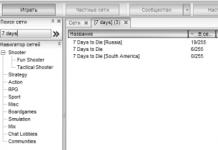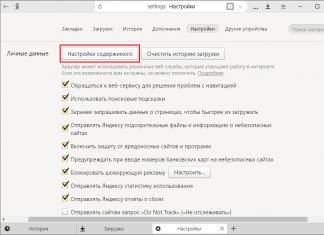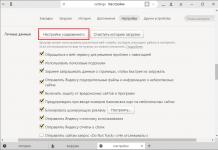iCloud is a cloud storage service provided by Apple for storing music, photos, documents and contacts. It allows you to access your files from any device. Backup and share information with other iOS devices.
The volume that can be stored here for free is 5 GB. For photographs, the size is determined by the number of files and the size does not matter. The service will keep 1000 photos for the last 30 days, which will be more and will be deleted before that.
How to get out of the cloud
There can be many reasons why you may need to leave iCloud: from buying a used phone to losing your account password.
To sign out of iCloud on iPhone, you need to do the following:
- Enter “Settings”, and then “iCloud”.
- In this menu, at the very bottom of the list there will be an option “Log out”.
- After this, the account on the iOS device will be deleted and no more data will be saved.

Click on Logout
When you click the Sign Out button, a pop-up message will appear. In which there will be a warning that if the account is deleted, all data will be deleted.
To avoid this, you need to click “Cancel” and go to the “iCloudDrive” tab, which, if this option is enabled, saves data. You need to save the necessary information and turn off iCloud Drive.
How to clear iCloud storage on iPhone
Now, when you click “Log Out” again on your account, a message may appear stating that if you delete your profile, photos stored in Photo Stream and documents located in the cloud will be deleted from your smartphone.
Accordingly, if there is important and valuable data there, then it is necessary to transfer it. For example, if we are talking about photographs, then you need to move them from Photo Stream to Camera Roll.
Then you should return to the menu, select “Photos” and opposite the “My photo streams” and “Photo sharing” options, move the switch to “Off.”

Now you need to go back to the menu and try to delete your account.
The application may ask what to do with Saphari objects, calendar and contacts. Several options will be offered:
- “Leave on iPhone” - and then all contacts and dates will be available on the device.
- “Delete from iPhone” - and then the data will be erased.
To clear it, you need to go to “Settings” - “iCloud” and select “Storage”. A list of files will appear; to erase them, just swipe it with your finger or do it through the “Edit” menu.
But in both cases, the information will be available in the cloud. To check this, you need to go to the Apple cloud website and log into your account. When you enter your previous password and login, the contacts and dates of this account will appear.
Unlink iPhone from the cloud
To unlink your iPhone from iCloud, you need to go to http/icloud.com from your PC using your Apple ID credentials and iPhone password.
- Go to the “Find iPhone” tab

- Select the menu item “All devices”.
- The drop-down list will contain all iOS devices associated with this profile. You need to select the device that you want to remove.
- If the gadget is offline, then click “Remove from Find iPhone.” And if online, then “Erase iPhone” in the window that appears in the upper right corner.
- Then confirm the “Delete from account” action.
iCloud is an excellent and useful application for managing your files and synchronizing devices. But sometimes there is a need to get rid of iCloud from your phone or clear its contents. To get out of there, you need to follow the instructions for removing iCloud on iPhone.
Articles and Lifehacks
Today, the owner of a mobile device stores a lot of different information on it. If we know what icloud is on an iPhone and know how to use it, we get the opportunity to store data without making any effort at all.
What kind of service is this
- iCloud Server, also often referred to as the “cloud,” is a free storage solution designed for Apple devices. It is important that we have installed version 5 or 6 of the iOS operating system, as well as version iTunes from 10.5 inclusive on the PC.
- Why do you need this “cloud” storage? For example, we took a photo of something with our iPhone. Thanks to automatic synchronization, the photo you take immediately appears on your Mac and iPad.
- The same goes for application settings, bookmarks in the Safari browser, etc. We will also be able to share pictures with our friends or find a missing Apple device. The main condition is access to the Internet.
- What information will be automatically synchronized using the iCloud server? Firstly, these are the videos and photographs we shot.
- Secondly, the player and Apple smartphone settings, as well as the operating system desktop settings. Thirdly, music files, books, applications and their data. Fourthly, SMS and MMS messages, as well as messages sent via iMessages.
- Note that game lovers will also appreciate synchronization. For example, we have the right to pause a game on an Apple tablet and continue it on a smartphone.
- This service is initially built into the system, and therefore does not need to be installed. The main thing is to follow timely updates.
- Registration is also not required - you just need to use your ID (that is, Apple ID), which we need to log into the App Store.
How is iCloud different from Dropbox?
- The disadvantage of Dropbox is that we can only work with this server manually, and we need to indicate the need to save this or that information every time.
- With iCloud, things are completely different. If we have enabled automatic synchronization, you don't have to worry anymore.
- Everyone in iCloud is offered a space of 5 gigabytes, where you can store everything that was generated by various applications (back-up settings, mail, program data, etc.). For a fee the space can be increased.
- As for storing photos, there are no significant restrictions. The main thing is to remember that the cloud server is ready to store no more than 1000 photos for the last month.
iPhone is a powerful smartphone with a huge range of capabilities - here you have both a work office and an entertainment center in one. With the help of an i-gadget, the user solves a lot of different problems and, of course, it accumulates a lot of important, interesting, useful information. Of course, losing it overnight by losing it, breaking your phone, or becoming a victim of theft is very sad.
It is noteworthy that the majority of those who have at least once unexpectedly lost their faithful electronic assistant regret not the loss of a materially valuable object and the need to spend money on a new gadget (although Apple smartphones are by no means cheap), but the loss of important data. This is why it is so necessary to create a backup copy of all information stored on the device.
Fortunately, modern technologies allow you to perform backups in literally two taps. The so-called cloud service – iCloud – comes to the aid of Apple users. What kind of “beast” this is and how to use it, we’ll talk in this article.
Cloud storage (or as modern users romantically call it “the cloud”) is a collection of online servers distributed on a network on which the user can store a backup copy of important data.
Clouds are created by various companies, that is, in fact, the user, by sending information to an online storage, transfers his data to third parties, but, of course, on the basis of an agreement that it will be protected and inviolable.
What if data is stolen from the cloud?
Should you be afraid for your data if it is stored by a third party? In general, no more than for jewelry placed in a safe deposit box at a bank. Of course, information leakage can happen, but banks have been robbed for hundreds of years, but this does not mean that money should be kept in your apartment - it is still safer in a special institution.

iCloud is the official cloud storage for Apple technology users
The “range” of online storage today is large, but owners of i-smartphones do not need to waste time to choose the most reliable and convenient one, because it is already in every Apple device, its name is iCloud, using this service, you can have maximum peace of mind for your data.
What information does the cloud store?
In iCloud you can back up almost any type of data stored on your device, here is a complete list of them:
- Music (including ringtones, TV shows and other audio materials)
- Video
- Books
- Applications and their data
- Basic smartphone settings, including desktop settings
- Messages (sent both via iMessages and in the usual way)
However, you can quite limit this range; more details on how to do this in the section “How to use iCloud?”.

More than just saving data...
Of course, the main option of iCloud on the iPhone and other i-devices is to save information important to the user. However, if you have several Apple gadgets, you will certainly appreciate the ability to synchronize information between them. This option gives you access to some really cool features. It’s clear that all content (music, photos, etc.) will be present on all synchronized devices. But look what we have since iCloud can remember application data...
For example, your iPhone and iPad are synchronized via iCloud, which means that you can start playing some game on your smartphone, and then, well, if your smartphone is low, for example, continue on your iPad, and exactly where you left off .

And all this is free?
Of course, when you learn about such cool opportunities, the thought immediately appears that all this is not free. Partly, the idea is correct. Apple generously provides the user with 5GB of free space, and in general, this is enough to store truly valuable data. But if you need more space, no one is stopping you from buying it.
iCloud tariffs
- 50 GB – 59 rubles per month
- 200 GB — 149 rubles per month
- 1 TB — 599 rubles per month
iTunes Match is another cool iCloud feature you have to pay for
iTunes Match is a service created for music lovers, allowing you to save on buying music. The service automatically analyzes the library of all music stored on the PC you are working on when you connect your i-gadget to iTunes, looks for a copy in the iTunes Store and downloads it (for free!) to all Apple devices synchronized via iCloud in good quality with album cover and detailed information about the composition and artist.

Thus, up to 25,000 tracks can be processed, and you will not pay anything for them, you will only need to pay for a subscription to the service - $25 per year. It’s very convenient - you don’t need to connect your devices to your PC again to download music, and for such convenience it’s relatively inexpensive.
How to use iCloud?
Well, now, about the most important thing - how to set up this wonderful service. Very simple! Follow the short instructions:
1 Open “Settings”, find the iCloud item - if you have not used the service before, you will need to log in. To authorize, use the Apple ID - the account that you created during the initial setup of the i-gadget. 2 After authorization, a window for working with the cloud will appear in front of you - it is a list of types of information that you can store. Opposite each item is a slider. You only need to select the types of data that you want to store and activate the corresponding slider. 3 If you have a lot of space in iCloud, you can make all the sliders active, otherwise you will have to choose the most valuable one.
Several items in the iCloud menu deserve special attention, including iCloud Drive, Backup, Keychain and Find my Phone. Let's look at why to activate them.
iCloud Drive
Tap on iCloud Drive and you will find yourself in a new menu, which will list applications for which you can set data storage in the cloud, each program has its own slider. Activate the ones you need and turn off the ones you don't need.
Backup copy
By tapping on the “Backup” line, you will again find yourself in a new menu. If you have never created a backup of information before, you need to first click on the “Create a backup copy” link, and then activate the slider next to the “iCloud backup” option, and then the backup will be performed whenever new information appears on your device .

Bunch of keys
This item is responsible for storing Safari passwords. Activate it and you won’t have to constantly enter account settings for one or another personal account when working with the Apple browser.
Find my Phone
And finally, Find my Phone is a very cool option. If your phone is stolen and Find my Phone is turned on, you can really annoy the attacker. How? More on this in the next section.
How to recover data from iCloud?
Recovering data from iCloud on a new device is very simple. When initially setting up an iPhone (or any other i-gadget), the setup assistant will ask you whether you want to get a “clean” new device or whether you need to transfer all the information from the previous one to it. To restore, of course, you need to choose the second option. Of course, for a successful transfer you will need to indicate the Apple ID of your old device.
If your smartphone is lost, you don’t have a new one yet, and you need to restore the data urgently, well, for example, to look up an important phone number, take any PC and go to the iCloud.com website (in general, you can go to this site from a mobile device, but with computer is more convenient), enter your Apple ID information to authorize, and you will have access to all the information that was included in your backup.

This same site allows you, if you are sure that the smartphone has been stolen, as we said above, to “annoy” the thief. If you previously enabled the Find my Phone option on your device, then through iCloud.com you will have the opportunity to activate “Lost Mode”. After turning it on, the attacker will no longer be able to do anything with the gadget - it will be blocked, and the password will be your Apple ID data.
Let's summarize
So, now you know what the iCloud cloud service is on an iPhone and you can appreciate the full power of its capabilities. And, as you may have noticed, you only need to create a backup once, then everything will be done for you. So don’t be lazy and make a backup right now if you haven’t already. Can you imagine how annoying it will be if you are lazy today, forget tomorrow, and the day after tomorrow you lose your device?
Every owner of an Apple device, be it a Macbook, iPhone or iPad, has probably heard about the iCloud Drive cloud service. But those users who are just planning to purchase such a device do not always understand what it is and what it is used for. In this material we will tell you what iCloud Drive is, what it is for, how to use it and how much it costs.
What is iCloud Drive and what is it for?
iCloud Drive icon.
iCloud Drive is a service that allows you to store information in the iCloud cloud with universal access on any of your Apple devices or through a browser. In other words, documents stored on your device or computer can be securely stored on iCloud servers and accessed from any available device at any time.
iCloud Drive also ensures documents are perfectly synchronized between your devices. Using iCloud Drive, you can upload, delete, rename files, and provide public access via a link.
First of all, iCloud Drive is about convenience. Once you start using this feature, you will no longer be able to refuse it. You're working on a document at the computer, and suddenly you need to go somewhere urgently - transfer the file to iCloud Drive and finish it on your iPhone or iPad while you're on public transport. One cool use is to take screenshots on your Mac and quickly access them from other devices. This feature is achieved due to the fact that screenshots are automatically saved to the desktop, which in turn is “one of the folders” of iCloud Drive.
How to use iCloud Drive

How much does iCloud Drive cost?
By default, you are given 5 GB of memory for free. You can fill them out as you wish: overwrite files, delete, etc. To increase the volume, 3 tariffs are available with monthly payment:
- 50 GB – 59 rubles/month;
- 200 GB – 149 rubles/month;
- 2 TB – 599 rubles/month;
Please note that at the moment Apple has not implemented a full-fledged ability to add files only to the cloud, without storing on the Mac. That is, if you add files to iCloud Drive on Mac OS, they will also remain on the Mac. When your computer runs out of free space, the system will analyze which files you use least often and delete copies of them from your device (leaving them only in the cloud). Sometimes this is incredibly inconvenient, because if you have 50 GB of cloud, you want to upload movies to them and free up space on your Mac, but you won’t be able to do this. But this opportunity is perfectly implemented in Yandex disk. Its utility is also available on Mac.
On October 12, Apple launched the long-awaited iCloud service. I propose to understand in detail what's what.
So, iCloud is a cloud service from Apple that allows you to synchronize various types of information between devices (PC, Mac, iPod Touch, iPhone, iPad). It requires iOS 5, Windows Vista SP2/7, OS X 10.7.2. There is also a web version at icloud.com, but more on that later.
Possibilities
—
iTunes in the cloud. Allows you to automatically download purchased music, applications or books to any of your devices. There will probably be a video in the future.
—
iTunes Match. If you have a large amount of music and do not want to buy it from iTunes, then this function will come in handy. iTunes Match scans songs from your library, if it finds a match, it uploads a song from the iTunes Store to the virtual library. If it doesn’t find it, it copies the song from your computer. In total, you can save up to 25,000 songs. The cost is $25/year, and this is the only paid option in iCloud, besides purchasing additional space.
—
Photostream. Taking photos with your iPhone is actually easier than carrying a camera with you all the time. And since the camera allows you to take good quality photographs, many people take photographs with it. But what if you need to transfer photos to your computer/iPad/Apple TV? This is where Photo Stream comes in handy - after a photo is taken, it is automatically uploaded to Photo Stream and transferred to other devices. Storage of up to 1000 photos is available, new ones are overwritten in place of old ones. All photos are stored on the computer, not just 1000. And absolutely nothing needs to be connected anywhere, you only need the Internet.
—
Documents in the cloud. Imagine this situation: you have a working file (document/presentation/spreadsheet) that needs to be uploaded to an iOS device, but you don’t have iTunes at hand. And this is where iCloud comes to the rescue. We go to the iWork section on the icloud.com website, upload the file to the required application, go to this application on iOS and in a couple of seconds the document is on your device. And you don’t need any more quickoffice and crutches for it in the form of dropbox. Everything is convenient and simple. When you edit a document on iOS, its “version” is automatically updated on all iOS devices and in the iCloud web version. So no changes to the document will be lost.
—
Backups. For me personally, this is the most important and necessary thing in iCloud (besides the previous point). You no longer need to connect your phone to iTunes every time in order to make a backup copy and not lose all your data. Thanks to iCloud, backups are created automatically when connected to a charger and Wi-Fi connection is turned on. What is included in the iCloud backup: device settings, location of icons on the screen, messages (iMessage, SMS, MMS), application data, photos and videos taken on the device’s camera, ringtones, purchased music, programs, books and TV shows.
—
Mail, calendars, reminders, contacts, notes, bookmarks. When creating an account in iCloud, you can create a mailbox like
What is its charm? The fact is that iCloud email accounts are the only ones that have instant push notifications when a message arrives on the server. Synchronizing calendars, reminders, contacts, notes and bookmarks will allow you to keep all your information up to date on any device.
—
Find Friends and Find iPhone. The Find Friends service allows you to see your friends' locations on the map (if they have allowed it) and get directions from your location to them. And “Find iPhone” shows the location of the iPhone/iPad/iPod Touch or Mac on the map. If you lose your device, you can remotely block it or display a message on the screen asking you to contact you.
Migrate from MobileMe to iCloud

When moving from MobileMe to iCloud, a small part of the former's capabilities will be lost. These features are: iDisk, gallery, publishing sites to iWeb, synchronizing Dashboard widgets, keychain, Dock items and system settings. I don’t know the statistics, but synchronizing the keychain, settings and iDisk was quite useful.
During migration, these options disappear, so if you need them, but you don’t have analogues, don’t rush to migrate. MobileMe accounts are valid until June 30, 2012. After this period, the service will cease to exist.
It is worth noting that when migrating from MobileMe to iCloud, you are given an additional 20GB of space for 1 year for your data.
Setup and use
Let's start with the web version. Its interface is almost identical to the interface of these applications on iOS. 
There are 5 main points here:
Mail. Your email account on me.com. You can call it a web version of the Mail client on iPad. 
Contacts. 
Calendar. 
Find iPhone (in my opinion, it’s time to rename the service to find device). 
iWork. You can upload your iWork, MS Office documents and they will automatically appear on iOS devices. Documents can be edited on a computer only after downloading and opening in an office suite. On iOS, documents are edited and loaded back automatically as you work with them. 
When you make changes to the web versions of the calendar, contacts, mail, all changes instantly appear on the iOS device. And vice versa.
You can also delete photo stream data in the web version. To do this, you need to click on your account in the main menu, click Advanced, then Reset Photo Stream. 
Setup on OS X and Windows very simple - we turn on the necessary services and the service itself starts working and synchronizes everything. 

For OS X, as I said at the very beginning, you just need to update the system to version 10.7.2. But with Windows it’s a little more complicated.
Firstly, there is no support for Windows XP. Secondly, you need Windows Vista SP2 or Windows 7 with MS Office 2007/2010 installed. Earlier versions are not supported.
Setting up on iOS no less simple - we update the device to iOS 5, go to Settings - iCloud, set the slider in the necessary services to the “On” position and agree to the enable request. 
A backup can be created in two ways: either automatically, while on a Wi-Fi network and connecting the device to charge, or manually. 
It is possible to select applications for which you need to copy data. 
If the standard 5GB of space is not enough for you, you can purchase additional space. My backup copy of 1 device takes up 170-200 MB on average, so I don’t see any need for additional space. 
Tariff plans are as follows:
$20/year – 10GB;
$40/year – 20GB;
$100/year – 50GB.
If you want a refund, you have 15 days to contact Apple.


























